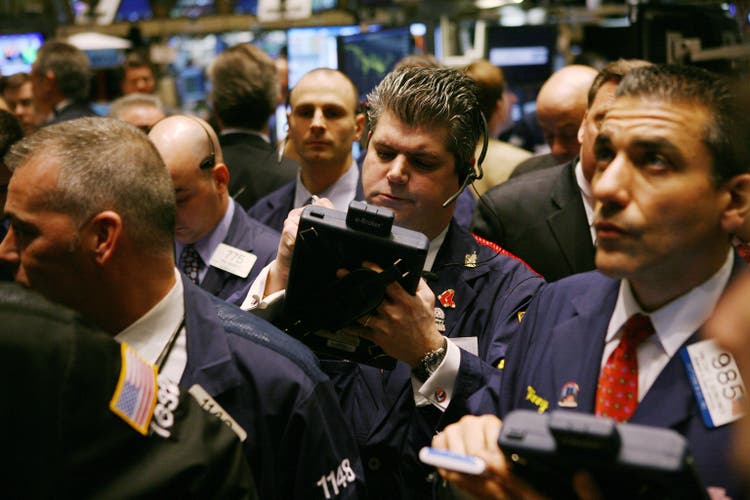
Hiroko Masuike/Getty Images News
There is not much you can add to the headlines this week in analyzing the performance of the stock market.
Consumer price inflation for May came in at 8.6 percent.
Investors are now expecting that the Fed will raise its policy rate of interest higher in June, July, and September by 50 basis points each move.
There is even speculation that the Fed will raise the rate in June by 75 basis points…something not done in a very long time.
Oh, and stock prices fell again on Friday.
On Friday, the S&P 500 Stock Index dropped 117 points.
On Thursday, the S&P 500 dropped 98 points.
These are not insignificant declines.
But, the story for the week is very simple.
More inflation. Fed moves faster to raise its policy rate of interest. And, stock prices go down.
Inflation Staying
So, the evidence is growing that the war in Ukraine is having a bigger impact on consumer prices than analysts had originally thought might be the case.
The prices of food, electric power, gasoline, and other staples have gone higher.
The inflation connected with services, like those provided by housing, stayed high. Some supply chain problems even worsened, after they were expected to fall.
Costs for staples like eggs, meat, and bread soared, with an index measuring the price of food at home registering its largest annual increase since 1979.
The news on the price front is just not “good” news.
So, the feeling that the current rise in inflation was just transitory has moved on to a feeling that it is not transitory, but still will easily moderate going forward, to a feeling that it will be around for a longer time than expected and will be more pervasive.
Consequently, the Federal Reserve must feel more of a burden as it fully enters the battle.
And, that is what investors are trying to translate into stock performance.
Still Not “Bear Country”
The stock market still has not moved into “bear country” although it has come close.
A little over three weeks ago, the S&P 500 dropped into “bear country”…but, just for a short period of time. The index closed the day, May 19, down 18.7 percent from its last historical high, which came on January 3, 2022.
The decline needed to be 20.0 percent or greater to reach “bear country.”
On Friday, the S&P 500 ended the day, down by 18.7 percent.
Close, but not there yet.
But the Federal Reserve dominates the news and will continue to do so for the near future.
Federal Reserve Meetings
The policy-setting committee at the Federal Reserve, the Federal Open Market Committee, has only five more meetings scheduled for the rest of 2022. These meetings come on June 14-15, July 26-27, September 20-21, November 1-2, and December 13-14.
As was discussed, investors have built up some pretty strong expectations for the first three of these meetings.
Between now and September 21, there could be a very substantial movement in the Fed’s policy rate of interest.
Some analysts even see the Fed’s target range for the Federal Funds rate as high as 2.50 percent to 2.75 percent after the September meeting, up from 0.75 percent to 1.00 percent now.
The Federal Reserve has not produced increases of this size for a long, long time.
This gives us some idea of the importance of ongoing events.
The markets are in disorder.
The Fed must bring some order about.
This is the dilemma.
Oh, also at the time of the June FOMC meeting, the Fed will begin its program of quantitative reduction of the Fed’s securities portfolio.
Beginning in June, the Fed has signaled that it will allow $47.5 billion in securities to mature off its balance sheet, $30.0 billion in U.S. Treasury securities and $17.5 billion in mortgage-backed securities. Same for July and August.
In September, the monthly runoff will rise to $95.0 billion, $60.0 billion in U.S. Treasury securities and $35 billion in mortgage-backed securities.
So, this is what the banking system and the financial markets will be experiencing over the next few months.
Stock Market Response
How will the stock market respond?
My guess is that the stock market will decline.
My guess is that stock prices will move into “bear market” country and continue on.
This is where we are now.
Things are certainly not going to get better before the fall.
The ultimate outcome will depend upon how successful the Fed is in containing inflation.
Right now, we must keep our fingers crossed.
from WordPress https://ift.tt/dQ3o254
via IFTTT

No comments:
Post a Comment